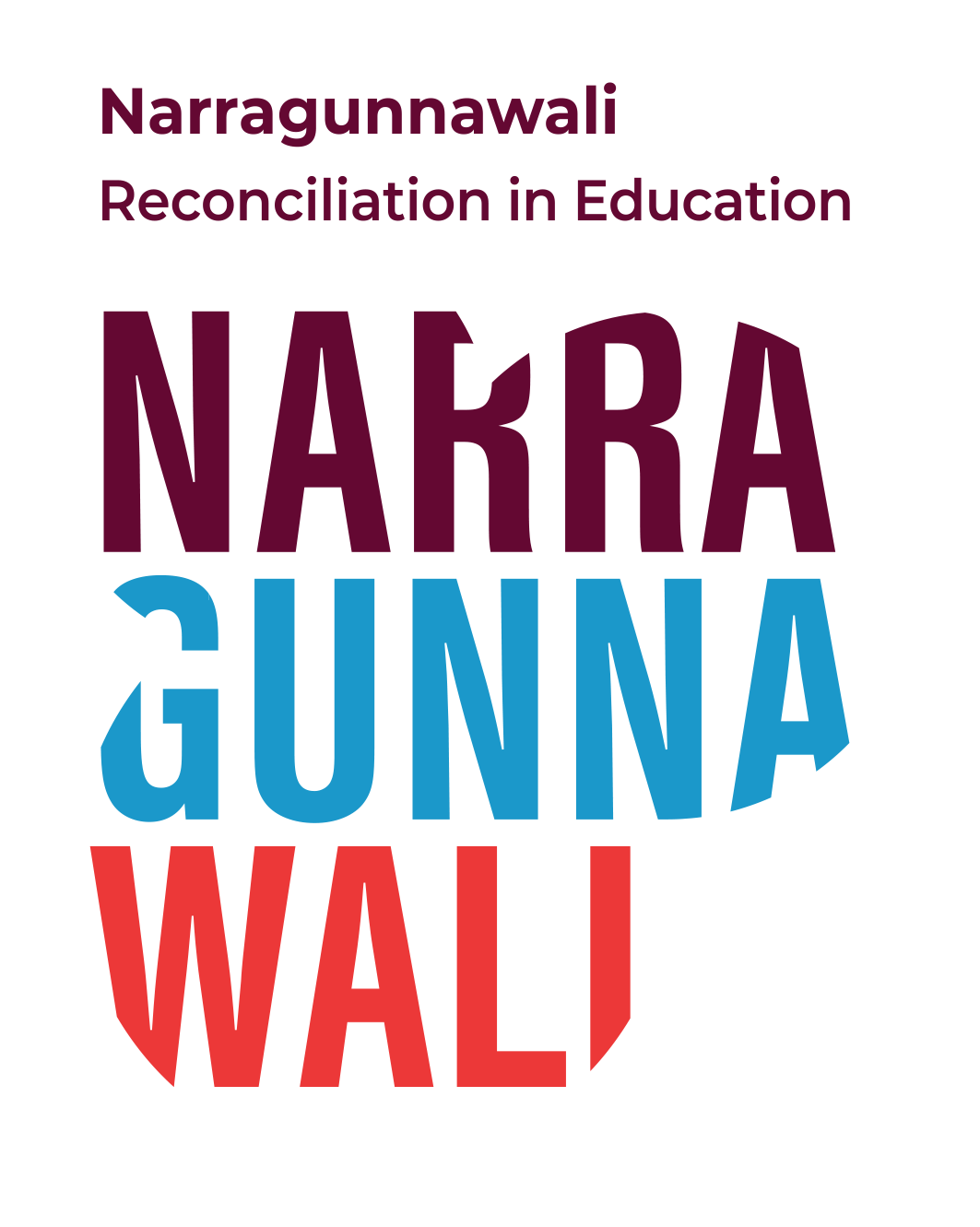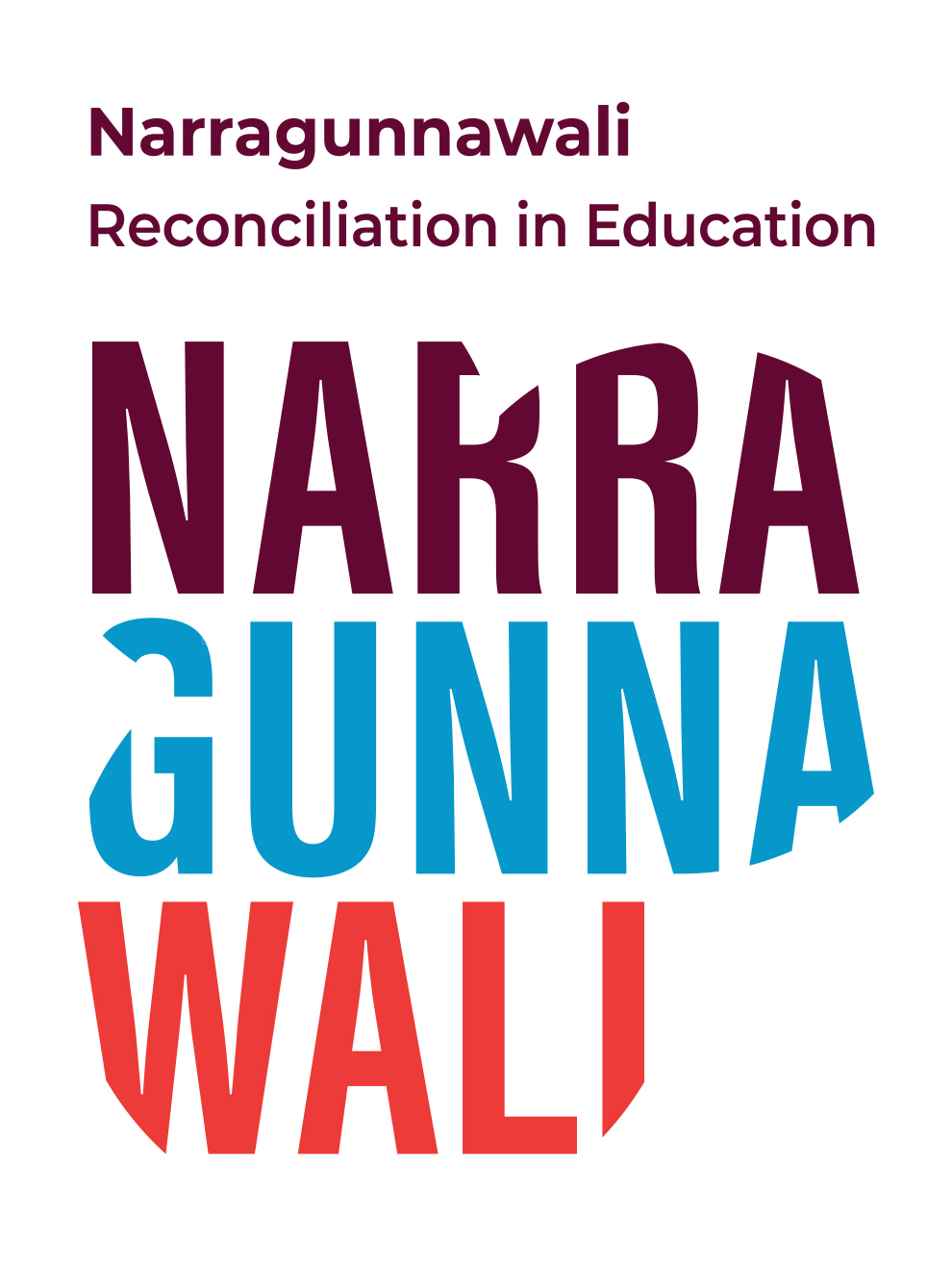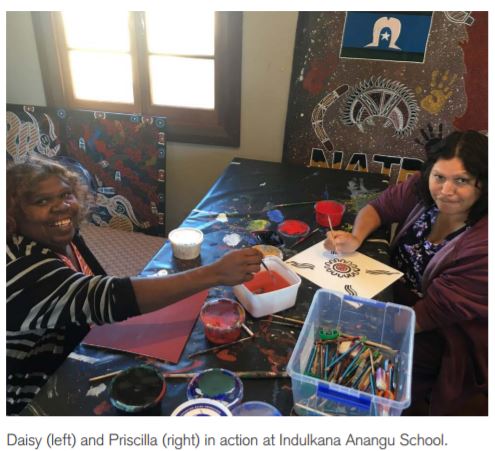Teacher Feature – Priscilla Singer and Daisy Henry, Indulkana Anangu School, SA
Earlier this year, Narragunnawali’s Esma Livermore and Stephanie Woerde met Priscilla Singer (right) and Daisy Henry (left) from Indulkana Anangu School at the Stronger Smarter Leadership Program. Esma and Steph were inspired by the ways these two women foster reconciliation in and around their school and community through the sharing of language and culture.
Esma: Steph and I first met you during the Stronger Smarter Leadership Program—what do you think helps students and children to be strong and smart?
Daisy: Coming to school every day, listening to their families, teachers and friends, and learning hard to become strong and smart for the community in the future. Role models in the school, community and sporting teams show the kids the right way to be and how to make strong choices.
Priscilla: Being able to read and write in both languages —traditional language and English.
Steph: What was it that made you decide to become a teacher?
Priscilla: I did it for the kids.
Daisy: Yes, I wanted to start teaching the kids how to read and write in the local language … I think that if you can read and write in Pitjantjatjara and Yankunytjatjara, then learning English becomes easier and our kids can think in both worlds.
Esma: Why is teaching Aboriginal and Torres Strait Islander languages important to reconciliation, and in general?
Daisy: Because the kids come to school speaking Pitjantjatjara and Yankunytjatjara, but they don’t know how to read and write these languages. Teaching them to read and write in their first language helps them to read and write in English. It also helps the kids to speak the proper way, and not to use slang—this way, they can teach their own kids when they grow up.
Priscilla: It is so important for the kids. Their language will keep strong, and so they will keep strong too.
Steph: How do you feel when you are teaching language, and how do you think the students feel to be learning language?
Priscilla: I feel proud! The students are proud too. They love it!
Daisy: I feel confident, brave and proud to teach my language to the kids. I think the kids enjoy learning their language, and they really like listening to my stories when I read to them.
Esma: What is your favourite Pitjantjatjara or Yankunytjatjara word or phrase, and why?
Daisy: Rikina, pukulpa! This means ‘good and happy,’ and that’s how I like to feel!
Priscilla: (*chuckling*) Lanma! It means ‘boring’ but I like saying it to make people laugh!
Steph: You are both also beautiful artists. Does art play a role in your teaching, and why is it important?
Priscilla: It is our culture. I have designed a new staff jumper that has art showing how we work with children!
Daisy: We both used to do painting in the Art Centre. We are both artists. Art can help to tell Tjukurpa, our Dreamtime stories, and it can help the kids to understand the stories. By painting, we can teach the kids about our history and tjukurpa.
Research shows a strong connection between Aboriginal language and cultural programs and children’s increased self-esteem, improved academic performance, improved school attendance, reduced drop-out rates and better proficiency in reading skills in both the Indigenous language and English.
-
18 Apr 2024NATIONAL RECONCILIATION WEEK 2024 CURRICULUM RESOURCES
-
18 Apr 2024Teacher Feature – Sherri Bryers, Tasmania
-
18 Apr 2024Civil Discourse: Post-Referendum for schools


